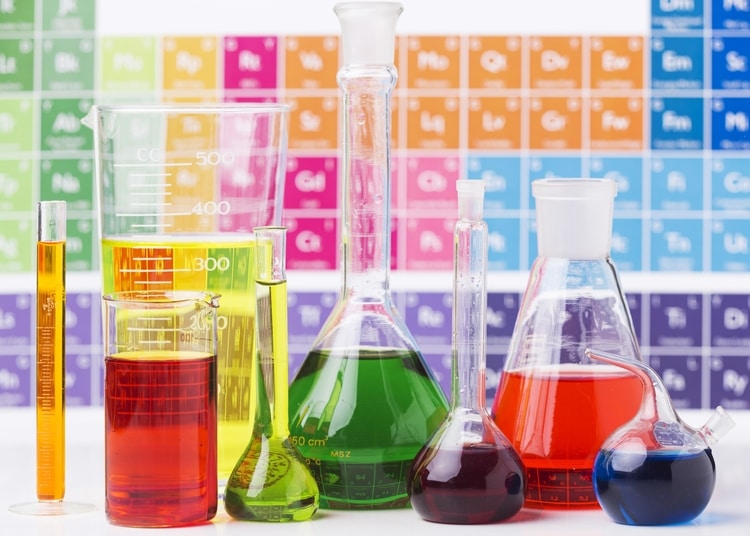Balancing chemical equations is a basic process in chemical reactions. A chemical equation of a chemical reaction cannot represent in unbalanced form. Therefore, we always balance them after writing reactants and products of a reaction.
However, sometimes different reactions require different methods to balance their equations. Balancing a redox reaction and balancing redox equations with fractions is among the methods that don't follow custom procedures.
In the article below it is mentioned how to balance equations in the basic medium of a redox reaction and how we can balance equations with fractions.
What is Redox Reactions?
Redox reactions are the reactions that involve oxidation and reduction reactions and carried out in aqueous mediums. It is also called an oxidation reduction reaction. It is a chemical reaction in which the oxidation number of an atom, molecule or ion is changed by losing or getting an electron.
Redox Reaction Example
Photosynthesis is the best example of endergonic redox process. In photosynthesis, the light energy of chloroplasts is converterd into chemical energy which makes glucose (C6H12O6).
In photosynthesis, the elections of hydrogen (H) are boosted by the light energy which makes those electrons to move from water to sugar. During this the water electrons are transferred to carbon dioxide and water molecules get splitted, this result in making of sugar.
Related: What is yield and how many types of chemistry yield are there?
Redox Reactions in Basic Medium
During redox reaction, if the concentration of H+ ions is more than OH- ions than the medium is considered as acidic.
Contrarily, in an aqueous solution comprising redox reaction the concentration of hydroxide ions is more than hydrogen ions then it is a basic medium. Therefore, we can say that an aqueous solution having a pH more than 7 is a basic medium.
How to Balance Equations in Basic Medium?
Redox processes in the basic medium involves having hydroxide ions (OH-) to be balanced, as bases liberate into OH- ions. To balance a chemical equation in a basic medium you have to follow the procedure in the same manner as for acidic conditions.
However, the difference between acidic and basic medium equation balancing lies, adding hydroxide ions to both sides of the net reaction to balance hydrogen ions (H+). Moreover, water (H2O) must be formed when both OH− and H+ ions are present on the same side of the equation.
- All common terms may be eliminated, no matter how many there are. The general steps taken to balance a chemical equation in basic medium involves:
- First of all, you have to figure out which parts of the equation are going to be oxidized and reduced.
- Then you will separate the oxidation half-reaction from the reduction half-reaction, thus dividing the reaction into two halves.
- Balance than the ionic compositions and atoms in each half reaction.
- Equalize the electron transfer that occurs in the half-equations of oxidation and reduction.
Can you balance chemical equations with fractions?
Equation Balancing and Coefficients
When you see coefficients on an equation, this means that a substance has more than one of its atoms. Moreover, you may modify them to adjust the equation to bring everything into balance.
Only the numbers of molecules are being changed when you alter the coefficients. Since altering subscripts will change the formula of the compound, you can't change subscripts.
Fractions in coefficients
In balancing equations, however, it is not recommended to utilize fractions as stoichiometric coefficients. Fractional quantities or simply fractions the coefficients must be multiplied by the denominator to preserve the mole ratio, creating whole numbers.
Fractional coefficients are used to balance chemical equations while ensuring that fractions of atoms are not produced at the end of equation balancing. Since splitting atoms is impossible in conventional chemical reactions, therefore 1.5 atoms of nitrogen are not able to exist for instance.
Equation Balancing with Fractions
In chemistry, you may have learnt that fractions should not be used while balancing chemical processes. However, this concept is not 100% true. It's possible to utilize a fraction to balance standard heats of formation, and in thermodynamics equations.
Even the most elementary processes in thermodynamics utilize whole numbers.
Teaching students to utilize just whole numbers for balancing responses constitutes a disservice to them, because they may not learn how to use their new knowledge in a more difficult course.
The important thing to keep in mind here is that it is acceptable to balance reactions using fractions in some reactions.
Balancing redox reaction is different from balancing chemical equation, so redox equation calculator can help a lot in this regard to learn and understand the redox reactions.


